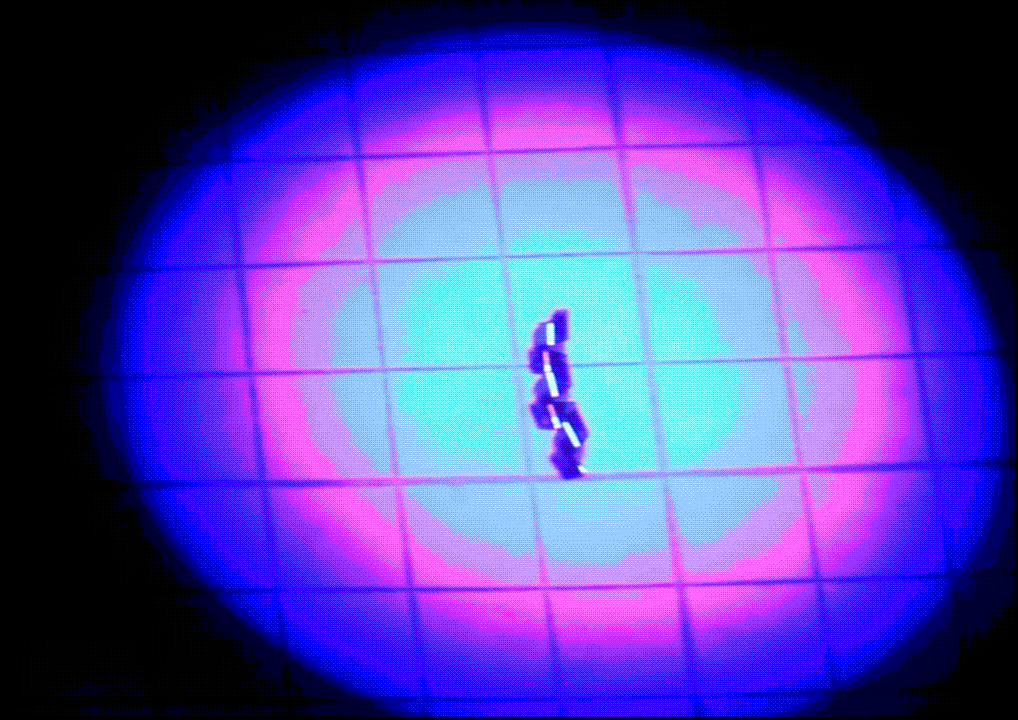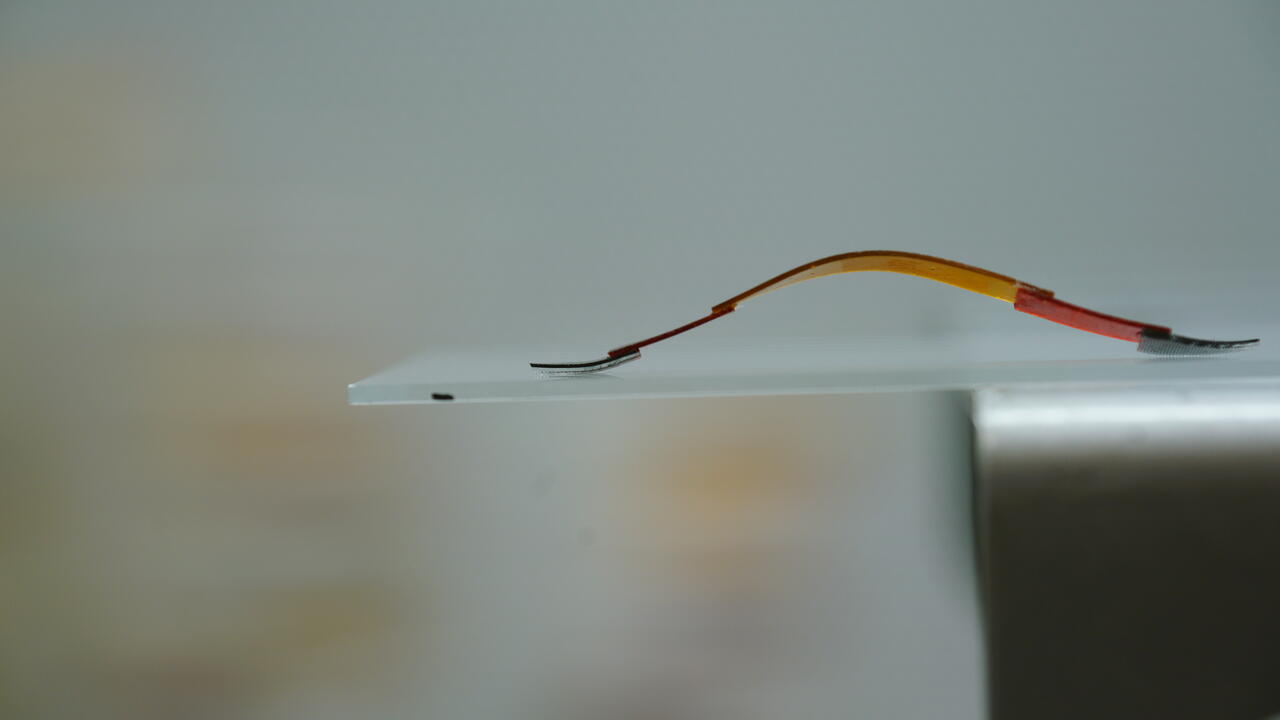
One of the impediments to developing miniaturized, “squishy” robots is the need for an internal power source that overcomes the power-to-weight ratio for efficient movement. An international group involving Inha University, University of Pittsburgh and the Air Force Research Laboratory has built upon their previous research and identified new materials that directly convert ultraviolet light into motion without the need for electronics or other traditional methods.
The research, “Photomotility of Polymers,” was published today in the journal Nature Communications (DOI: 10.1038/ncomms13260).
The group includes M. Ravi Shankar, co-author and professor of industrial engineering at Pitt’s Swanson School of Engineering. Lead author is Jeong Jae Wie, assistant professor of polymer science and engineering at Inha University, South Korea. The experiments were conducted at the Air Force Research Laboratory’s (AFRL) Materials & Manufacturing Directorate at Wright-Patterson Air Force Base, Ohio, under the direction of Timothy J. White.
Other investigations have proposed the use of ambient energy resources such as magnetic fields, acoustics, heat and other temperature variations to avoid adding structures to induce locomotion. However, Dr. Shankar explains that light is more appealing because of its speed, temporal control and the ability to effectively target the mechanical response. For the material, the group zeroed in on monolithic polymer films prepared from a form of liquid crystalline polymer.
“Our initial research indicated that these flexible polymers could be triggered to move by different forms of light,” Dr. Shankar explained. “However, a robot or similar device isn’t effective unless you can tightly control its motions. Thanks to the work of Dr. White and his team at AFRL, we were able to demonstrate directional control, as well as climbing motions.”
According to Dr. Wie, the “photomotility” of these specific polymers is the result of their spontaneous formation into spirals when exposed to UV light. Controlling the exposure enables a corresponding motion without the use of external power sources attached directly to the polymer itself.
“Complex robotic designs result in additional weight in the form of batteries, limb-like structures or wheels, which are incompatible with the notion of a soft or squishy robot,” Dr. Wie said. “In our design, the material itself is the machine, without the need for any additional moving parts or mechanisms that would increase the weight and thereby limit motility and effectiveness.”
In addition to simple forward movement, Dr. White and the collaborative team were able to make the polymers climb a glass slide at a 15-degree angle. While the flat polymer strips are small – approximately 15mm long and 1.25mm wide – they can move at several millimeters per second propelled by light. The movement can be perpetual, as long as the material remains illuminated.
“The ability for these flexible polymers to move when exposed to light opens up a new ground game in the quest for soft robots,” Dr. Shankar said. “By eliminating the additional mass of batteries, moving parts and other cumbersome devices, we can potentially create a robot that would be beneficial where excess weight and size is a negative, such as in space exploration or other extreme environments.”
Learn more: Engineering research at Pitt, Air Force, and South Korea shines light on self-powered mobile polymers
The Latest on: Self-powered mobile polymers
[google_news title=”” keyword=”Self-powered mobile polymers” num_posts=”10″ blurb_length=”0″ show_thumb=”left”]
via Google News
The Latest on: Self-powered mobile polymers
- New 2D Polymers Bridge the Gap in Electron Mobility for Organic Semiconductorson April 22, 2024 at 9:09 am
In a recent paper published in Chem, researchers from Pohang University of Science and Technology have developed conducting two-dimensional polymers with electron mobility comparable to graphene, ...
- The best powered speakers in 2024, tested and reviewedon April 9, 2024 at 5:01 pm
Read on to learn what’s great about the best powered speakers and how to start your journey into the maximized minimalism of a sweet new self-contained sound system. We explored hundreds of ...
- Model suggests how ancient RNA may have gained self-cutting ability essential for lifeon March 27, 2024 at 5:01 pm
The researchers observed that breakage led to more copies of the polymer that was broken, meaning that molecules capable of self-cleavage would have been favored by evolution due to their ability ...
- Chemistry newson March 15, 2024 at 11:28 pm
Scientists at the Department of Energy's Oak Ridge National Laboratory have developed a method that demonstrates how fiber-reinforced polymer composite materials used in the automotive ...
- Unbreakable Design: The Polymer Mechanochemistry of Self-Healing Materialson October 17, 2023 at 1:11 pm
What if we could invent materials that can repair themselves when damaged? Polymer molecules in various states – solid, melt, solution – are susceptible to covalent bond changes in response to ...
- Polymer poweron December 7, 2021 at 11:48 pm
low power needs and the relatively low lifetime requirements of such devices. The first polymer solar panel products are likely to be chargers for portable electronic devices (such as mobile ...
- Paper Keyboard Is Self-Poweredon September 8, 2020 at 6:12 pm
But engineers at Purdue have printed a self-powered Bluetooth keyboard on an ordinary sheet of paper. You can see videos of the keyboards at work below. The keyboards work by coating paper with a ...
- Vacuum Dust Collection With Self-Powered Relayson June 5, 2020 at 7:01 pm
As with other DIY systems we’ve seen over the years, [Will] is using a simple inductive current sensor to detect when AC power is being drawn by one of his tools. But where the similarity stops ...
- Self-Storage And The Mobile Internet In Asiaon March 31, 2014 at 6:04 am
For the self-storage operators who embrace the mobile Internet, that statement is doubly true. Joshua Steimle is the CEO of MWI, a digital marketing agency with offices in the U.S. and Hong Kong.
via Bing News










